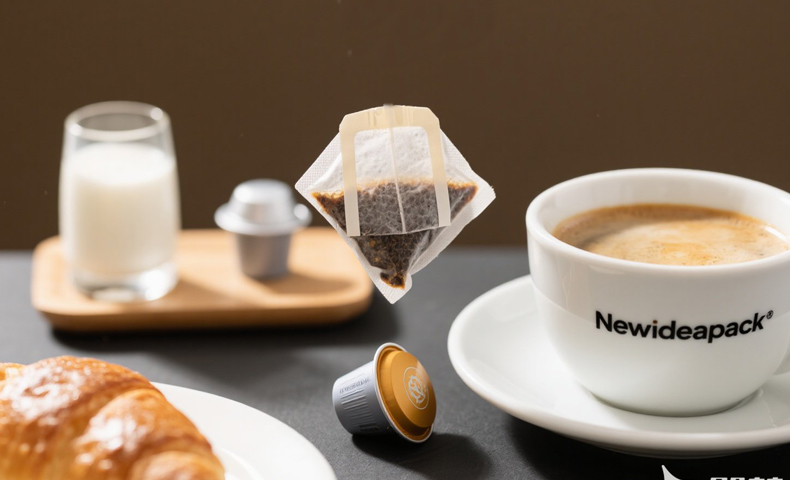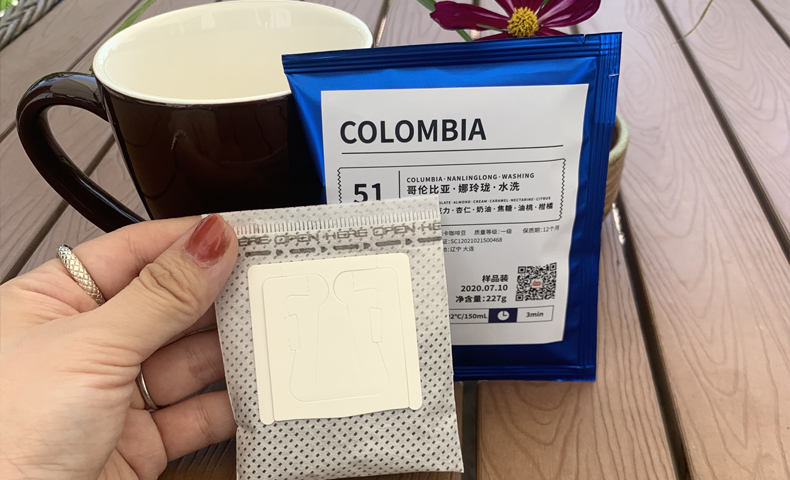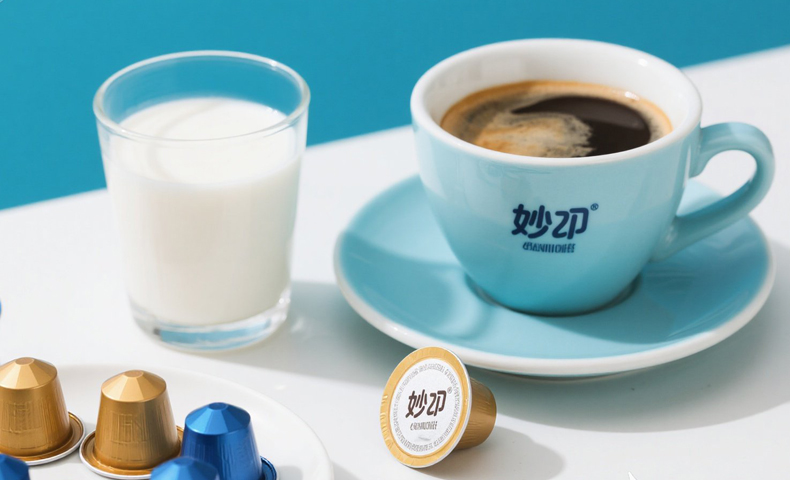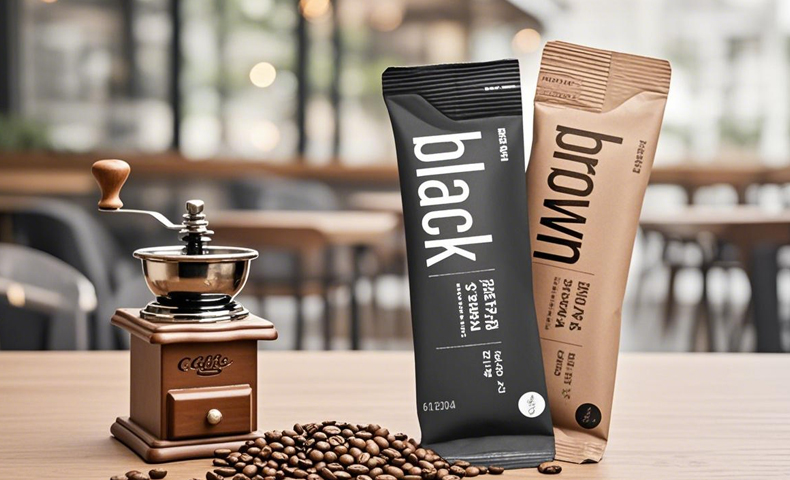How Micro-Packaging is Reshaping Coffee Branding
Micro-packaging is becoming a significant trend in the coffee industry, and for a good reason. It offers brands the ability to create unique, convenient, and sustainable products that appeal to modern coffee consumers. But what exactly makes micro-packaging so popular in coffee branding?
The Growing Popularity of Micro-Packaging in Coffee
Micro-packaging allows coffee brands to offer smaller, more portable packaging options, catering to on-the-go coffee drinkers. As consumers look for convenience and sustainability, micro-packaging has proven to be an effective way to enhance brand appeal and attract a broader customer base.

1. What is Micro-Packaging and How Does It Fit into Coffee Branding?
Micro-packaging is the use of small, compact packaging for coffee products. This type of packaging often focuses on single-serve options or small, convenient portions that appeal to consumers who are constantly on the go. In the coffee industry, micro-packaging can include single-serve pods, small bags, or even coffee sticks designed for convenience.
By using micro-packaging, coffee brands can cater to consumers who value portability and want their coffee experience to be easy, quick, and accessible. This approach to packaging fits well with today’s fast-paced lifestyles, where people often seek products that can be consumed quickly and without hassle.
Table: Common Types of Micro-Packaging in Coffee
| Type of Micro-Packaging | Example | Benefits |
|---|---|---|
| Single-Serve Pods | Coffee pods (e.g., K-Cups) | Easy to use, convenient, portable |
| Small Pouches | Single-serving coffee bags | Freshness, cost-effective |
| Coffee Sticks | Pre-measured coffee sticks | Portability, on-the-go consumption |
2. Why is Micro-Packaging Becoming Popular in Coffee Branding?
Micro-packaging is increasingly becoming a favorite choice for coffee brands due to consumer demand for convenience. As more people look for products that align with their busy lifestyles, single-serve packaging is gaining ground in the coffee industry.
The rise in on-the-go coffee consumption plays a large role in the popularity of micro-packaging. With busy schedules, people prefer products that offer quick and easy solutions. Micro-packaging meets this demand by providing coffee in smaller, more manageable portions that can be consumed anywhere, anytime.
Additionally, consumers are becoming more conscious of sustainability and eco-friendly packaging. Coffee brands that offer micro-packaging in recyclable or biodegradable materials are better able to align with modern environmental concerns, which further drives the adoption of micro-packaging.
Table: Factors Driving the Popularity of Micro-Packaging in Coffee
| Factor | Description |
|---|---|
| Convenience | Single-serve sizes offer quick, on-the-go consumption |
| Sustainability | Growing demand for eco-friendly, recyclable packaging |
| Cost-Effectiveness | Smaller portions reduce waste, making it easier for consumers to manage |
3. What Are the Key Benefits of Micro-Packaging for Coffee Brands?
Micro-packaging offers numerous benefits to coffee brands, from cost savings to enhanced consumer satisfaction. One of the primary advantages of using micro-packaging is the ability to reduce production costs. Smaller packaging requires fewer materials, which translates to lower costs for manufacturers.
In addition to being cost-effective, micro-packaging also enhances the consumer experience. Small, portable packages allow consumers to enjoy their coffee in any setting—whether at home, in the office, or on the go. The convenience factor cannot be overstated in today’s fast-paced world.
Moreover, micro-packaging can help extend the freshness of coffee. Smaller packaging, when sealed properly, can preserve the coffee’s quality for a longer period, providing a fresher product for consumers.

Table: Benefits of Micro-Packaging for Coffee Brands
| Benefit | Description |
|---|---|
| Cost-Effective | Reduced material costs and lower shipping expenses |
| Consumer Convenience | Easy portability and single-serve options |
| Extended Freshness | Sealed packaging helps preserve freshness for longer periods |
4. How Can Coffee Brands Use Micro-Packaging to Differentiate Themselves?
Coffee brands can use micro-packaging as a tool to stand out in a crowded market. By offering unique, small-packaged products, brands can differentiate themselves from competitors that rely on traditional, bulk packaging. Micro-packaging also provides a canvas for creative packaging designs, which can enhance a brand’s visibility and appeal.
Packaging design is crucial in today’s competitive marketplace. Coffee brands can experiment with bold colors, quirky designs, and eco-friendly materials to attract attention. This is particularly effective in niche markets where customers are looking for unique, specialized products.
Table: How Coffee Brands Use Micro-Packaging for Differentiation
| Strategy | Example | Result |
|---|---|---|
| Creative Design | Bold, minimalistic, or artistic packaging | Enhances shelf appeal, attracts target audience |
| Eco-Friendly Materials | Use of biodegradable or recyclable packaging | Aligns with environmental values, appeals to eco-conscious consumers |
5. What Types of Micro-Packaging Are Common in the Coffee Industry?
Coffee brands have embraced various forms of micro-packaging, each designed to cater to specific consumer needs. The most common types of micro-packaging in the coffee industry include single-serve pods, small resealable bags, and coffee sticks.
Single-serve pods, such as Keurig or Nespresso pods, are particularly popular in the office and home markets. Small resealable bags are often used for premium or specialty coffee, offering convenience while maintaining freshness. Coffee sticks are another innovative solution for on-the-go coffee drinkers who want a hassle-free experience.
Table: Types of Micro-Packaging for Coffee
| Type | Use Case | Advantages |
|---|---|---|
| Single-Serve Pods | Home and office use | Convenient, easy-to-use, no mess |
| Small Resealable Bags | Premium or specialty coffee | Freshness, reusable packaging |
| Coffee Sticks | On-the-go consumption | Easy to carry, no preparation needed |
6. How Does Micro-Packaging Enhance the Consumer Experience?
Micro-packaging offers consumers a more personalized and convenient coffee experience. Single-serve options allow for quick, portion-controlled servings, which eliminates waste. These smaller packages are particularly useful for people who want to control their coffee consumption without committing to a larger bag or container.
Additionally, the compact nature of micro-packaging makes it easy to transport and store. Whether on a trip, at work, or at home, consumers can enjoy coffee without needing to brew a full pot.

Table: How Micro-Packaging Improves Consumer Experience
| Aspect | Benefit |
|---|---|
| Portion Control | Consumers can enjoy fresh coffee without wasting any |
| Portability | Small packages can easily fit in bags or drawers |
| Convenience | Easy-to-use packaging with minimal preparation required |
7. What Environmental Impact Does Micro-Packaging Have in Coffee Branding?
Sustainability is a growing concern among consumers, and coffee brands are increasingly seeking ways to reduce their environmental footprint. Micro-packaging can contribute to sustainability efforts by using less material and offering more eco-friendly packaging options.
However, the environmental impact of micro-packaging depends on the materials used. Coffee brands that use biodegradable or recyclable packaging are better positioned to appeal to environmentally conscious consumers.
Table: Environmental Impact of Micro-Packaging in Coffee
| Impact | Description |
|---|---|
| Material Usage | Less packaging material used for smaller portions |
| Eco-Friendly Options | Biodegradable and recyclable materials help reduce waste |
| Consumer Preference | Consumers are more likely to support sustainable brands |
8. How Can Coffee Brands Choose the Right Micro-Packaging for Their Products?
Choosing the right micro-packaging is essential for coffee brands to maximize the benefits of this strategy. When selecting packaging, brands must consider factors such as consumer preferences, packaging material, and cost-effectiveness.
Coffee brands should prioritize packaging that aligns with their brand values and appeals to their target market. If sustainability is a key brand focus, using eco-friendly packaging will be crucial.
Table: Key Factors in Choosing Micro-Packaging for Coffee
| Factor | Consideration |
|---|---|
| Consumer Preferences | Understand the target market’s needs and desires |
| Packaging Material | Choose eco-friendly materials that align with brand values |
| Cost-Effectiveness | Ensure that the cost of micro-packaging does not outweigh its benefits |

Conclusion
Micro-packaging offers coffee brands an opportunity to create convenient, eco-friendly, and cost-effective solutions for their customers. By embracing this trend, coffee brands can differentiate themselves, enhance consumer experiences, and contribute to sustainability efforts. With the right strategies, micro-packaging can be a powerful tool for brand growth and customer loyalty.
FAQ Section
- Q1: What is micro-packaging?
Micro-packaging is small, compact packaging for coffee products, typically designed for single servings or small portions, focusing on convenience and portability. - Q2: How does micro-packaging benefit coffee brands?
Micro-packaging helps reduce costs, offers convenience for consumers, and can improve product freshness, making it an ideal solution for the modern coffee market. - Q3: What types of micro-packaging are used in coffee?
Common types include single-serve pods, small resealable bags, and coffee sticks, each catering to different customer preferences and consumption habits. - Q4: How does micro-packaging contribute to sustainability?
Micro-packaging can reduce waste by using less material, and when eco-friendly materials are used, it can contribute to environmentally conscious packaging solutions. - Q5: What challenges do coffee brands face with micro-packaging?
Challenges include balancing the cost of packaging, ensuring the durability of small packages, and catering to customers who prefer larger quantities.
